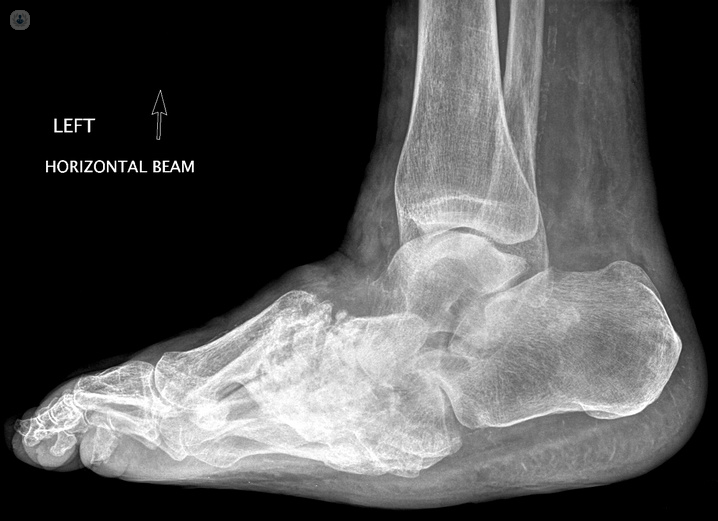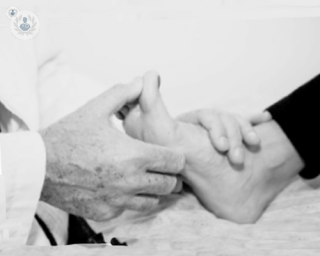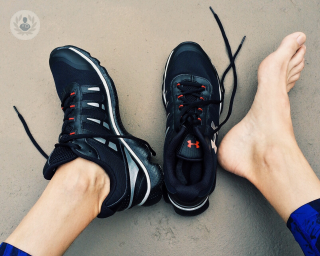Charcot foot
Mr Syam Morapudi - Orthopaedic surgery
Created on: 02-24-2014
Updated on: 08-15-2023
Edited by: Kate Forristal
What is Charcot foot?
Charcot foot is a progressive condition affecting the foot and ankle. Charcot foot attacks bones, joints, and soft tissues, and can cause sores to form on the feet, or cause the foot to change in shape. Generally doctors specialising in conditions of the foot, such as an orthopaedic surgeon specialised in the foot and ankle, treat Charcot foot.

Prognosis of charcot foot
Charcot foot causes bones to weaken, meaning that they can break, and move out of place. Joints in the foot and ankle can become dislocated, and eventually collapse, leading to deformity in the foot. Sores on the foot can also become infected, and in some cases, the affected foot may require amputation.
Symptoms of charcot foot
Symptoms can be difficult to spot at first, and the first signs of Charcot foot can look and feel similar to other problems and conditions affecting the feet, meaning an accurate diagnosis is essential in charcot foot. Initial symptoms may appear as swelling and/or redness in the foot, the foot feeling warm to the touch.
Medical tests to diagnose charcot foot
X-rays and clinical testing may not find any signs or symptoms of Charcot foot. In order for an accurate diagnosis, a foot specialist will assess the symptoms and take an accurate medical history in order to determine if the symptoms indicate Charcot foot.
What are the causes of charcot foot?
While Charcot foot itself does not have an identifiable cause, it largely occurs in those with peripheral neuropathy. Peripheral neuropathy is a condition affecting the nerves in the feet and lower limbs, which can cause a loss of sensation in the feet. This loss of sensation can mean that early signs of charcot foot may be difficult to spot or go unnoticed.
Peripheral neuropathy is most commonly caused by diabetes, but it may also be caused by Parkinson’s, HIV, spinal trauma, rheumatoid disease, psoriasis, or alcohol and drug abuse. Not all cases peripheral neuropathy lead to charcot foot, but some do.
Can charcot foot be prevented?
If you have diabetes, regular check-ups with a doctor are advised, but checkups with a doctor specialising in foot problems or diabetic foot can also help to take care of your feet. Wash your feet regularly and check them carefully, watching for signs of charcot foot, such as swelling, redness, and warmth.
Treatments for charcot foot
Treatment for charcot foot focuses on taking the stress off the affected foot, preventing the condition from further developing, and in some cases, surgical intervention in order to repair the bones affected.
To begin with, weight is kept off the foot by the application of a cast, which protects it and stops it from moving too much. The cast is generally worn for several months, during which time you will need to use a wheelchair or crutches to move around. The specialist or doctor will monitor progress during this time and change the cast, checking if the swelling has gone down.
Once the cast has been removed, you will be advised on prescription footwear, which will fit correctly and be designed specifically for you. This will help to relieve any pressure on the foot and protect it from further problems developing. In addition to prescription footwear, in some cases patients require bracing.
In cases where the charcot foot has caused severe deformities, surgery may be recommended. This route is taken only in cases where the foot is unstable and if you are not able to wear any special prescription footwear or bracing. Surgery aims to re-align bones and make the foot more stable, in addition to smoothing over any sharp bones which could cause sores in the future.




